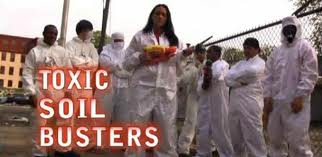If you are paying attention, then you already know the bad news.
Our food isn’t really food anymore. It’s food like. Food ish… but it isn’t really real. Or, at least it isn’t what it used to be.
Scientists have been playing with the genes of the things that we eat. Wringing maximum profits out of chicken and fish and peas and carrots. The results are horrifying. Bees are dying, but so are we. We’re dying of obesity, and all of those things that are obesity related. Which is, kind of, almost everything.
The worst part is, if you live in the wrong place or don’t dwell in the right tax bracket, you might not even be able to get good food. Real food.
Well, you’re not alone. There are people out there who were sounding the alarm years ago. For them, this struggle that many of us are just now waking up to, has been public enemy number one for a long time. They know the answers. And if we were smart, everyone would be singing their gospel.
The following five activists should be stupid famous. They aren’t the only ones on the front line, but in every case, they are generals. This list is not comprehensive. Thank god.
Majora Carter, from the Boogie Down Bronx
In the late nineties her dog pulled her into a vacant, trash strewn lot at the end of Lafayette Avenue in the Bronx. I would have pulled back. She plowed on, and found herself on the banks of the Bronx river. That began her quest to restore the waterfront.
Since then she founded a non-profit, raised a lot of money, launched the South Bronx Greenway and established a consulting group aimed at helping other communities create green strategies of their own. Now she’s developing a national brand of locally grown produce.
This is what she had to say about the Greening of the Ghetto in a 2011 Q&A with BET.com.
Where do you find the worst environmental conditions in terms of air, water or soil, the least amount of parks per person? Poor neighborhoods, aka “ghettos”—of any color. Applying green strategies in these places will yield the greatest percentage improvement per dollar. They are also the places where we should encourage another kind of “green”—the development of enterprises that provide jobs that do not pollute the environment.
Glenn Ross from Baltimore
Mr. Ross has always been an activist. But he hasn’t always called himself an environmentalist. The man spent more than 20 years in the trenches, trying to get the needs of his East Baltimore neighborhood met. He dealt with sanitation, public health, housing… but never drew the connection to the environment, a word which he equated to mountains and bears. Sound familiar? He certainly isn’t the only on who thought that the environment was for other folks.
Still, he recognized that environmental injustice was often at the root of his work, even if it was under a different name.
“They planted this area with African ferns and sunflowers to remediate it. Of course we didn’t know it back then, but the African ferns absorbed the arsenic in the ground, and the sunflowers were there to absorb the lead. We used to pick those sunflowers and take them home and eat them. There was no warning, no sign. Nothing. Then a couple years later the city sent in all these guys in hazmat suits to harvest the stuff.”
It was his experience with the environmental challenges that East Baltimore silently faced that inspired him to create, Baltimore’s Toxic Tours. Yes, if you are unsure that certain neighborhoods bare a disproportionate burden of toxic pollution, he will take you around and show you, first hand. Fun, right? I know.
The Toxic Soil Busters (TSB) from Worcester Mass, Grind for the Green (G4G) from Oakland Ca, Third Eye Unlimited, from New Bedford Mass, and more…
The these guys are all young, community minded and organized. And they are changing the face of environmental activism.
There are more than 600 youth led groups nation wide, and they are raising awareness and creating jobs. while removing toxic waste and combating corporate pollution, making movies which highlight global warming, and pretty much everything else that can possibly be done.
Although there are adults hanging around (like we tend to do,) it’s the kinds that are doing the heavy lifting. That includes the boring things that nobody, not even adults, want to do. Things like bookkeeping.
Although they are young, they are masters of the oldest trick in the book. The bait and switch.
“We put on events that aren’t billed as green and use hip-hop culture as a carrot to get a different segment of young people in the room,” says Zakiya Harris, founder and executive director of G4G. “Once there, we give them a lot of other information. So if they’re not already in the youth empowerment field, our events are one way for them to engage.”
Right now, people don’t necessarily think of young, urban, people of color when they speak on the environmental movement. That is changing quickly, and groups like TSB and Third Eye Unlimited are at the helm.
For more information check out these organizations,It’s Getting Hot In Here and SustainUs: US Youth for Sustainable Development.
I’ve written about this before here and here. And I’ll write about it again. I mean, this is just three out of hundreds. I didn’t even get around to Tanya Fields, the woman who gave TedX a mean pimp slap after they removed her from their program. Yeah, that Tedx.


